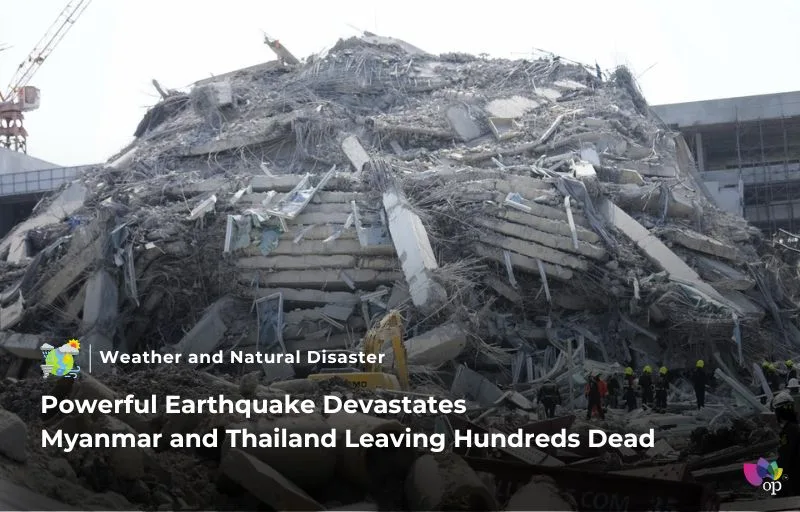According to the reports on Saturday (29 March), devastating 7.7-magnitude earthquake struck Myanmar and Thailand on Friday (28 March), killing over 700 people and injuring nearly 1,700. The epicenter was located northwest of Sagaing in central Myanmar, with the hardest-hit area being the Mandalay region. A powerful 6.7-magnitude aftershock followed minutes later, causing further destruction and panic. Officials warn that the death toll may rise as rescue operations continue.
In Myanmar, infrastructure suffered severe damage, with roads, bridges, and buildings collapsing under the force of the quake. Many areas remain cut off due to blocked roads and communication failures, making it difficult for rescue teams to reach those in need. The military government has deployed emergency teams to assist in search and recovery efforts, but the scale of the destruction poses a significant challenge.
In Thailand, the quake was felt as far as Bangkok, where a 30-storey skyscraper under construction collapsed, killing at least 10 people. Rescuers have been working nonstop to locate survivors trapped in the rubble, with up to 100 workers still missing. Bangkok Governor Chadchart Sittipunt emphasized that efforts are being made to save as many lives as possible, urging for additional resources and support.
The true impact of the disaster remains unclear due to limited information from remote areas. Many fear the number of casualties will continue to rise as rescue teams reach more affected locations. Authorities are urging people to remain cautious as aftershocks are still a possibility. Humanitarian aid and international assistance may be necessary to help those affected rebuild their lives.
References


